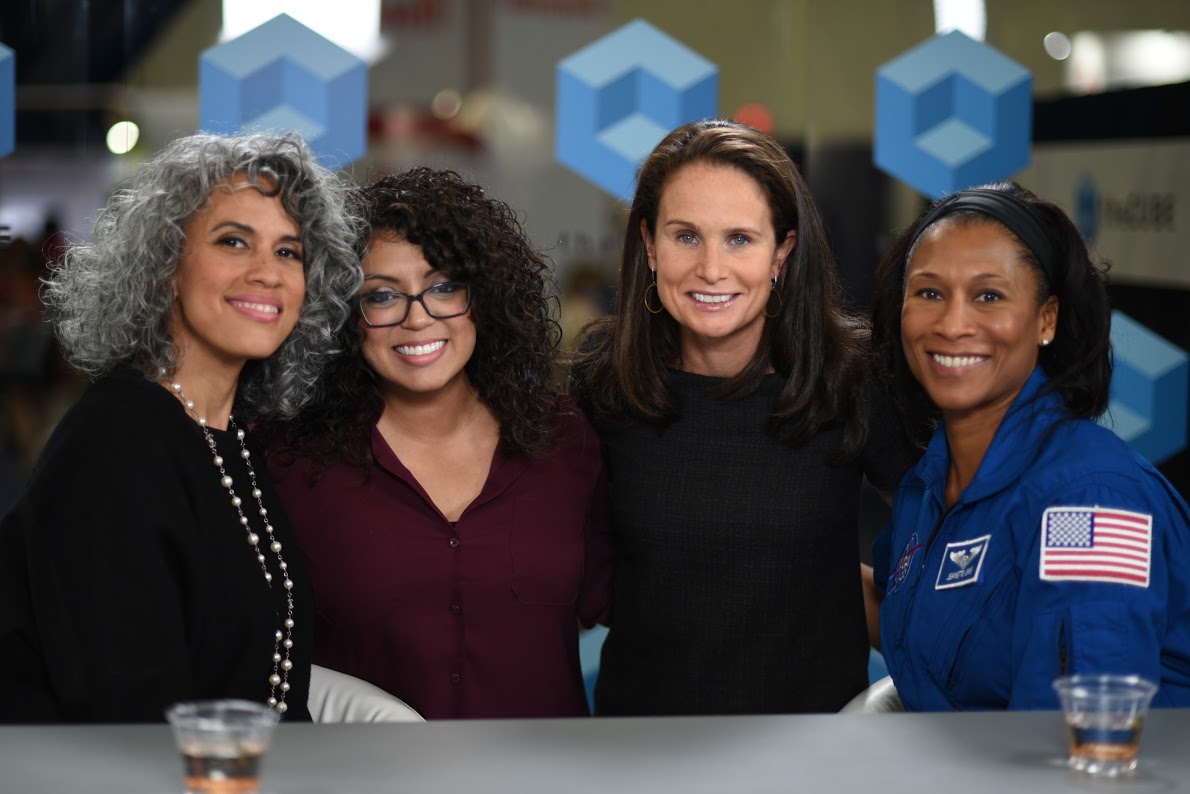 WOMEN IN TECH
WOMEN IN TECH
 WOMEN IN TECH
WOMEN IN TECH
 WOMEN IN TECH
WOMEN IN TECH
In December, a movie called Hidden Figures will be hitting the theaters. The story is about an unknown team of three African-American women who were actively working at NASA to support the Friendship 7 mission in 1962 with critical mathematical calculations that launched America’s first person, John Glenn into orbit.
This movie is coming out 55 years after President John F. Kennedy showed his support for programs that were essential to this story. In 1961, Kennedy formed the President’s Commission on the Status of Women to explore equal rights for women in the workplace. He tasked the Commission to develop “recommendations for services which will enable women to continue their role as wives and mothers while making a maximum contribution to the world around them.”
Then, on May 25, 1962, he asked Congress for additional funding for the space program and a commitment to “landing a man on the moon before the decade is out.”
Dr. Jeanette Epps, astronaut at NASA’s Johnson Space Center; Christina Deoja, electrical engineer at NASA; and Mimi Valdes (@MimiValdes), executive producer at Hidden Figures, were all in attendence at the recent Grace Hopper Celebration of Women in Computing. While there, they spoke to Rebecca Knight, host of theCUBE, from the SiliconANGLE Media team, to talk about their roles in the NASA Mars program and what it’s like being role models. Epps, Deoja and Valdes are theCUBE’s Guests of the Week.
Epps felt that Obama’s October 2016 CNN.com Op-Ed on sending humans to Mars by the 2030s will do for the Mars mission what Kennedy did for the moon mission. “It will inspire a new generation to do great things,” she said.
According to Deoja, there is lots of technology that is under development to get astronauts to live longer away from Earth’s surface, such as the propulsion that can get us there and home faster.
History teaches us all kinds of lessons, and the movie Hidden Treasures teaches us how the Kennedy-era moon race led an extraordinary team of women, Katherine Johnson, Mary Jackson and Dorothy Vaughan, to help John Glenn fulfill his mission by calculating flight paths and aeronautical measurements.
“John Glenn would not go unless Katherine double checked the figures … he trusted her,” said Valdes. She explained that it was during this time that IBM was introducing computers to NASA and Glenn said that he only had confidence in Katherine’s numbers before he performed.
He wanted a human to make sure the calculations were correct. Valdes is hopeful that this movie will inspire more young women to go into STEM (Science, Technology, Engineering and Mathematics) careers. “That some young girl somewhere may see this movie and decide to pursue a career in math or science or STEM careers is really gratifying,” she expressed.
Epps also discussed the “A” –for Art– in STEAM (Science, Technology, Engineering, Art and Math) and how the arts are valuable to science. “The arts play a big part of this. There is a lot of artwork that comes into play in science,” she reported.
Knight asked the women about attracting the next generation into the field. Valdes pointed out that representing all the opportunities that are possible, through the media, is important. She analyzed kids’ attraction to their cell phones.
“Maybe [they] are not realizing the importance of STEM careers that are making their phones possible,” she illustrated. “I think the more we can expose these careers and all the possibilities, it would be more beneficial for humanity in general.”
Deoja noted that when a movie like Hidden Treasures comes out, more requests for mentoring surface. She feels she makes more of an impact through mentoring K through 12 and undergraduate students. “Where they are trying to figure out what are their career options in STEM, I feel like I can have an impact there,” she said.
Epps told Knight that she is proud to be a positive role model. She revealed that her mother raised her and her twin sister that anything was possible regardless of gender or race.
“There are a lot of young ladies that actually do experience that, and if having a positive role model can show them, ‘If I can do this, you can do this too,’ there’s no reason you shouldn’t be doing this right now,” she expressed.
Epps continued to say that is essential as a role model to represent you and your group well. “Don’t do less, and don’t accept less,” she warned.
However, the three women also agreed that there is a need to fail to learn. Deoja said the expression at NASA is “fail forward,” and that is all part of the process.
Watch the entire video below, and be sure to watch more of SiliconANGLE and theCUBE’s coverage of the Anita Borg Institute’s Grace Hopper Celebration of Women in Computing.
THANK YOU